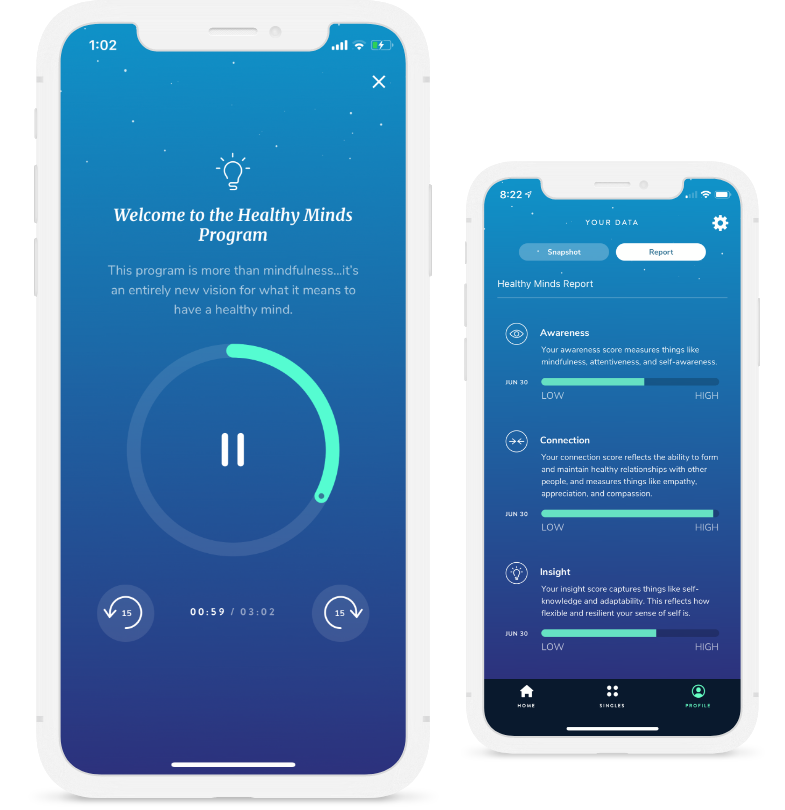About Cort
Cortland Dahl, Ph.D. is a leading expert on mindfulness, meditation, and the science of wellbeing. His eclectic background includes long periods of solitary retreat in the Himalayan foothills of Nepal and the translation of ancient Tibetan meditation manuals, as well as cutting-edge research on the science of wellbeing and the creation of an acclaimed meditation app. He is a scientist, author, translator, entrepreneur, and meditation teacher, but his true passion is using ancient wisdom and modern science to help people flourish.
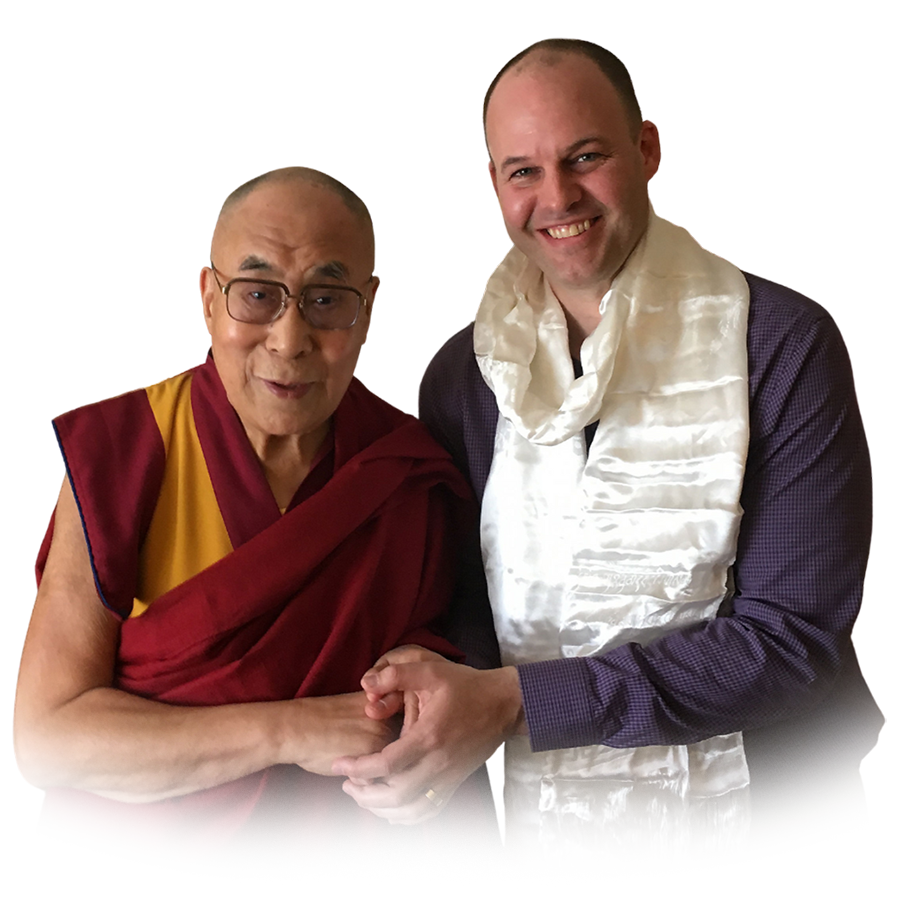
The Journey
Cortland’s lifelong interest in meditation and the science of flourishing began in the early 1990s when he struggled with social anxiety as a college student. His struggle with anxiety proved to be a blessing in disguise. The challenges he faced eventually led him to the practice of meditation and the study of psychology, and eventually to his first trip to Asia on a college study abroad program. After completing his undergraduate degree, he spent a year backpacking around the world, with much of his time spent meditating in Asia. He spent time in a Japanese zendo, on meditation retreats in Thailand and Malaysia, and long periods practicing yoga and meditation wherever he could find solitude.
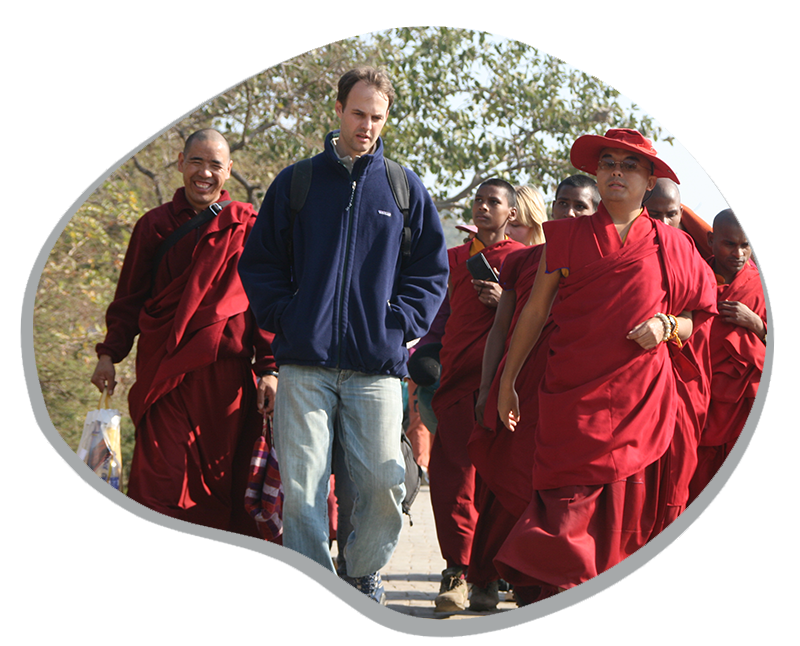
Cort with Mingyur Rinpoche in Rajgir, India, 2007
In the late 1990s, he returned to the U.S. and continued his studies, receiving a Master’s Degree in Buddhist Studies at Naropa University in Colorado. After completing his degree, he returned to Asia to continue his studies and spend more time meditating in retreat. Cort ended up spending the next eight years living in Tibetan refugee settlements in Nepal and India. It was also at this time that he met Chatral Rinpoche, Khenpo Sherab Sangpo, and Mingyur Rinpoche, three revered Tibetan lamas who became his most important teachers. Under their guidance, he studied classical Buddhist texts on philosophy and meditation and spent more than a year on solitary retreat in the Himalayan foothills near the Kathmandu valley.
Translating Ancient Tibetan Texts
Cortland also became fluent in Tibetan in this period and went on to become a prolific translator and scholar. He completely immersed himself in the Tibetan language, first in Darjeeling, India in 2001 and then in Kathmandu, Nepal. His initial motivation to learn Tibetan was his desire to meditate in solitary retreat under the guidance of Chatral Rinpoche, a renowned meditation master who had spent more than 40 years meditating in caves and other isolated places. Chatral Rinpoche had few non-Tibetan students, so Cort had no choice but to learn Tibetan. After a year of intensive study, Cort was fluent enough that he began to receive teachings and began a series of meditation retreats under Chatral Rinpoche’s guidance.
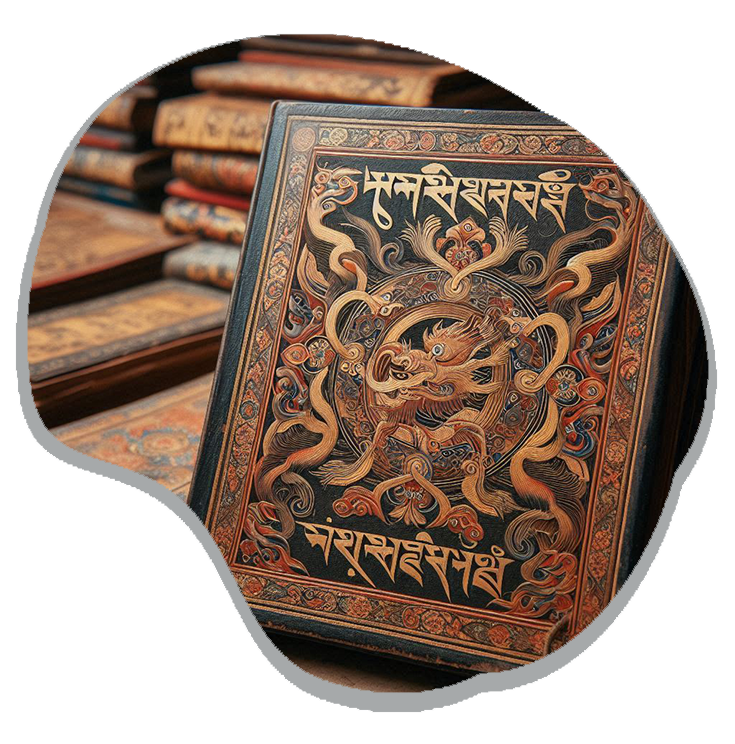
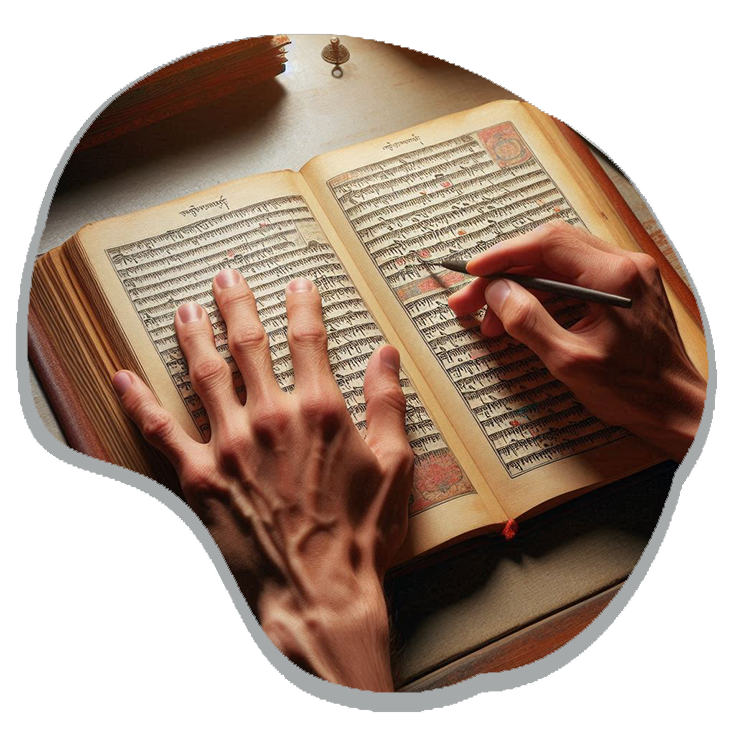
To enrich his own personal study and practice, Cort began reading some of the most important meditation manuals of the Tibetan tradition in these years, and eventually began translating some of them into English. He was fortunate at this time to spend time with Khenpo Sherab Sangpo, one of the most respected Tibetan scholars of his generation. Cort served as his personal translator and received many teachings from him, and was able to receive direct guidance on difficult points for the texts he was translating. Over the following decade, Cort translated many profound texts and published twelve volumes of translations. His publications include classics of Buddhist philosophy and practical teachings on meditation practice, but he was most inspired by the instruction manuals he was using to illuminate his own experience in retreat. He focused his energy on a specific form of meditation known in Tibet as Dzogchen, a profound tradition that points to very subtle qualities of “pure awareness” that can be experienced through meditation.
Learn more about Cort’s published translations.
The Birth of Tergar
In 2001, while living in Nepal, Cort met Mingyur Rinpoche, who at the time had just emerged from many years of study and retreat. Mingyur Rinpoche eventually became his closest and most important meditation teacher. In 2006, he asked Cort to help him open an institute for the study of Buddhist meditation at his monastery in Bodhgaya, India. They began working together closely and have collaborated ever since. In 2009, they co-founded Tergar International and began a network of meditation groups and centers that now spans the entire globe, with communities on six continents. They also co-created the Joy of Living program that same year, a path of meditation that draws on traditional Tibetan teachings but presents them in a way that anyone can follow, regardless of religious or cultural background.
Learn more about Tergar.
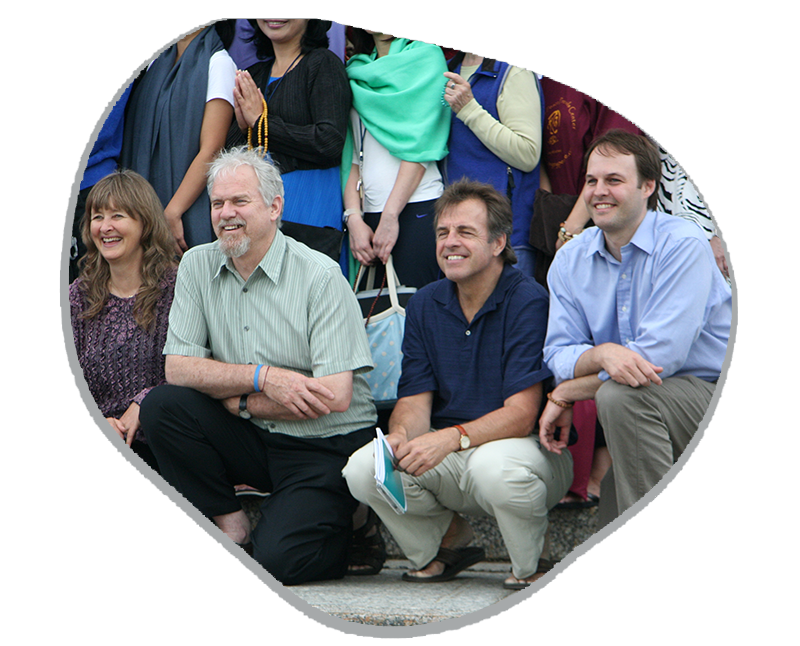
Cort with the other three founding meditation instructors of the Tergar community (Myoshin and Edwin Kelley, and Tim Olmsted)
Cort continues to study closely with Mingyur Rinpoche and serves the Tergar community in a variety of ways. He has been on Tergar International’s board of directors since its inception and served as board chair from 2009 to 2020. He is also the Executive Director for the organization. With Tergar International and also with the Rime Foundation, a non-profit he founded in 2004, Cort has more than 20 years experience as a leader in the non-profit sector.
In addition to his role with Tergar International, Cort has also been teaching meditation and Buddhism since 2003. He has created more than twenty online courses over the years, with hundreds of lessons, guided meditations, and carefully curated pathways to help people discover their full potential to lead rich, fulfilling lives. He regularly leads meditation retreats and teaches courses on meditation and Buddhist principles around the world.
Learn more about Cort’s upcoming courses, retreats, and other offerings.
The Neuroscience of Flourishing
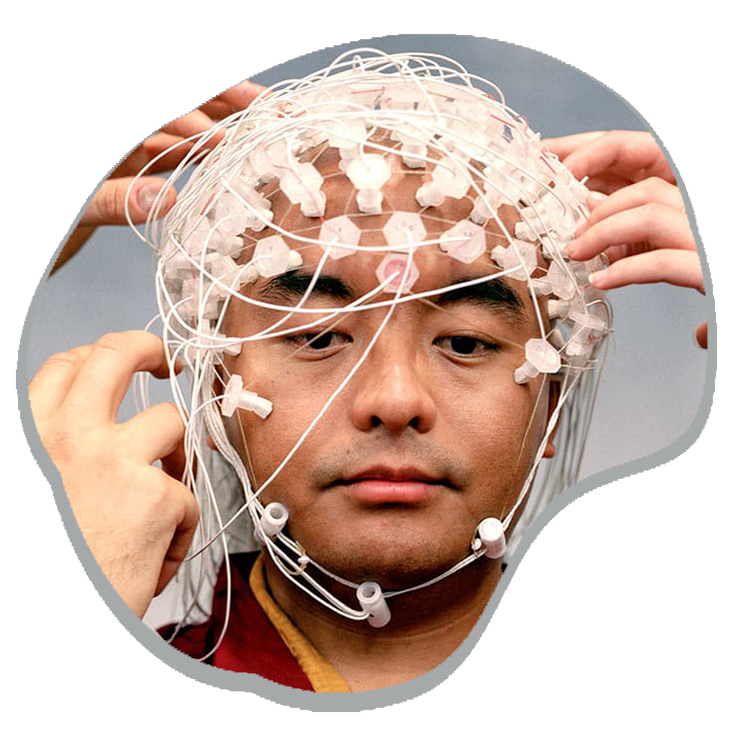
Mingyur Rinpoche wearing an EEG net in the lab of Dr. Richard Davidson. Photo by Brian Ulrich.
In 2016, Cortland received a Ph.D. in Mind, Brain, and Contemplative Science, the first ever degree of its kind awarded by the university. He has now published numerous scientific articles, including a highly cited cognitive science article that presents a taxonomy of different families of meditation and a new scientific framework for the cultivation of well-being, published in the Proceedings of the National Academy of Sciences (PNAS). As part of his Ph.D. dissertation, Cort drafted the curriculum for the Healthy Minds Program, a groundbreaking training in different forms of meditation based on ancient meditative wisdom presented through the lens of modern science.
Learn more about Cort’s work at the Center for Healthy Minds.
The Healthy Minds Program
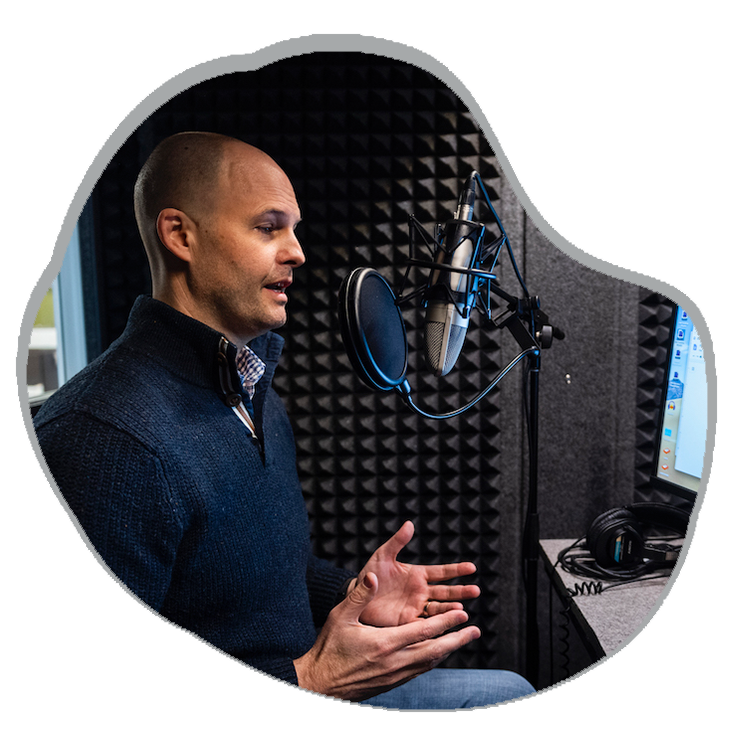

The Healthy Minds Framework and the Healthy Minds Program App are now out in the world. The app has been downloaded more than one million times and has been featured by the New York Times, Vogue, Sports Illustrated, Healthline, and many other platforms and publications. Numerous rigorous scientific studies have been conducted by Cort and his colleagues, as well as other scientists, including studies on the use of the Healthy Minds app to improve depression, to boost the mental health of teachers and school employees, and also to explore important scientific questions, like what “dosage” of meditation is needed to improve mental health, how to measure the core dimensions of well-being, and how active meditations can support our ability to flourish.
Check out the Healthy Minds Program app.
Ancient Wisdom Meets Modern Science
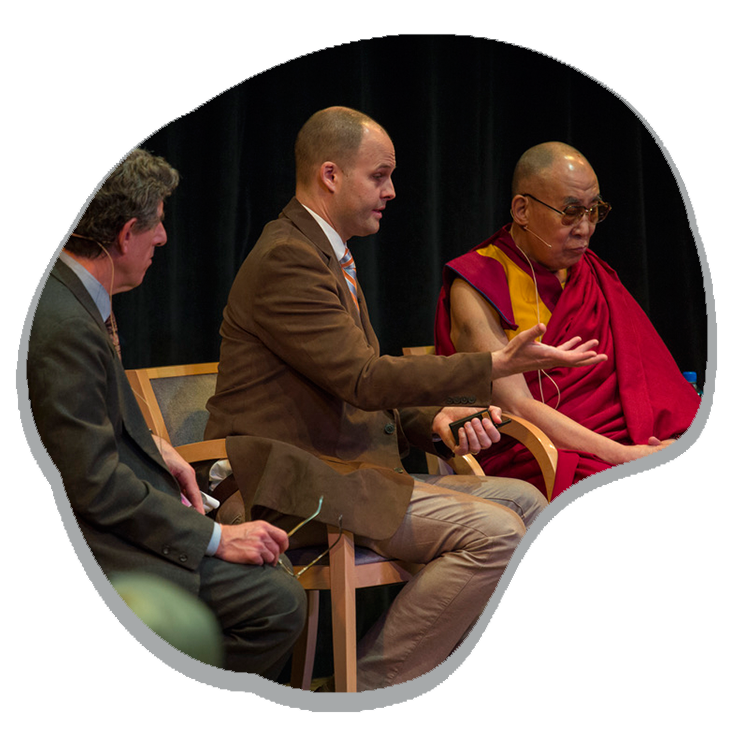
Cort and his wife divide their time between Madison, Wisconsin and the boundary waters of Northern Minnesota. In his free time, he enjoys traveling, meditating in retreat, and spending time with family.



